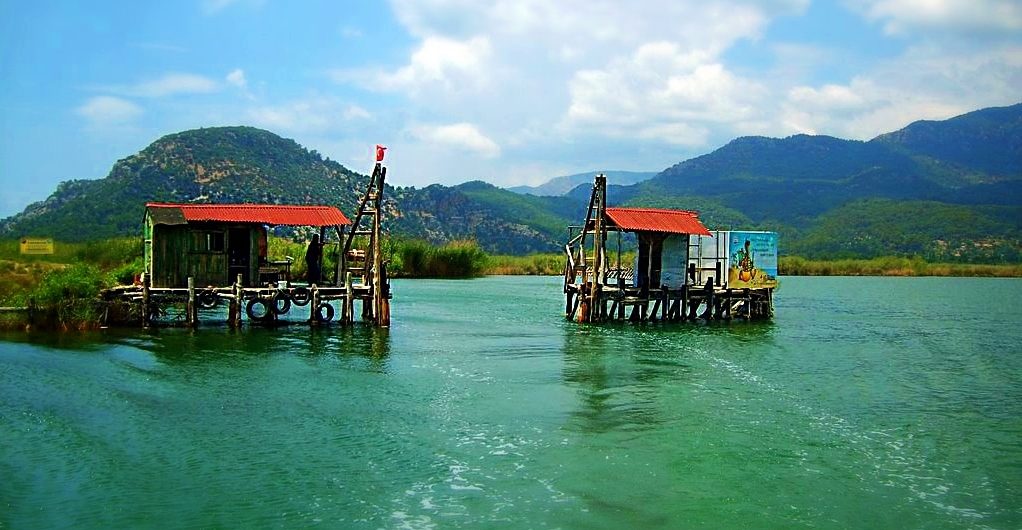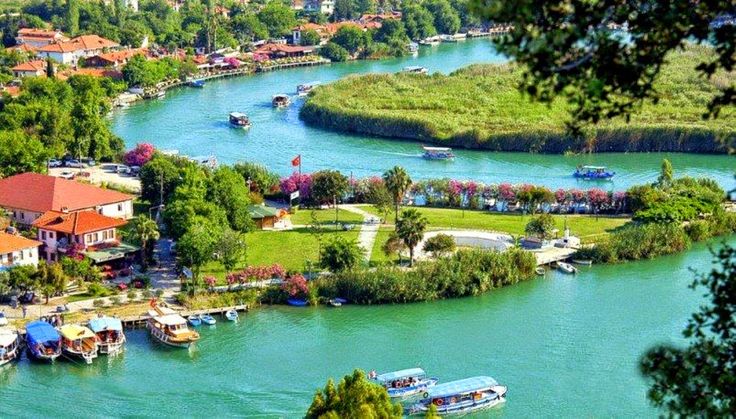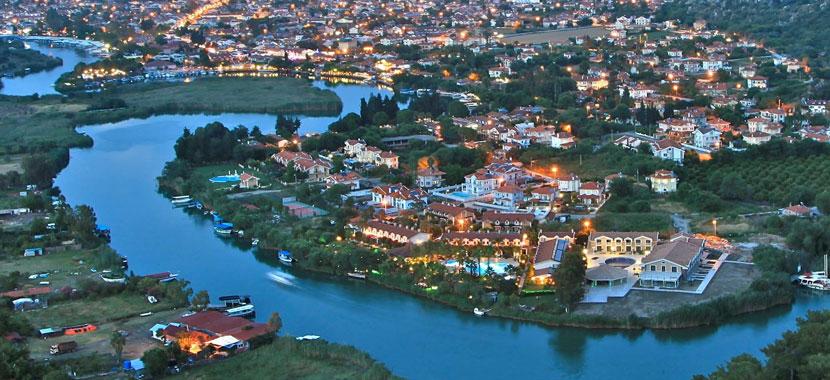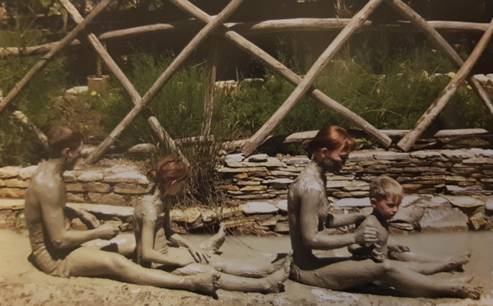Boats travelling from Dalyan to the Iztuzu Beach pass through the gate of a fish trap constructed of gauze stretched between poles, so as to block the fishes from one side to the other. A “Dalyan” in fishing terms, is controlled by a watchman’s post, before boats enter the delta’s labyrinth of reed islets and complicated waterways. It is customary to salute the fish trap watchman while going in and out of this gate, which is sunken below to provide passage for the boats and raised back in place immediately after the boat has passed.
he town of Dalyan has a history that probably dates back to the 13th century, but which received it’s status technically speaking during Süleyman the Magnificent’s Rhodes campaign. More recently, about 30 to 40 years ago, this settlement turned village was almost exclusively dependent on agriculture and fishing for its sustenance.
Spread out all along the river banks, and dotting the Delta like an archipelago, the tall plumes of reeds whisper a very old story in the soft breezes. This is the tragic tale told by Ovid in his masterpiece “The Metamorphoses”, about the birth of the Calbis River and legendary King Caunos, who founded the ancient city named after him.
According to this legend, Caunos and Byblis, twin children of King Milatos, were very attached to each other.
Archaeological research has shown the existence of an ancient sanctuary dedicated to the Goddess Leto in the vicinity of the Sultaniye thermal springs. According to Greek myth Leto, daughter of the Titans Koios and Phoibe, gave birth to the twins Apollo and Artemis of the Greek pantheon following her union with Zeus. The most important cult centre of this mother goddess of Anatolia, especially of the Lycian origin and her two children is the Letoon sanctuary close the Xanthos, where each have a dedicated temple.




